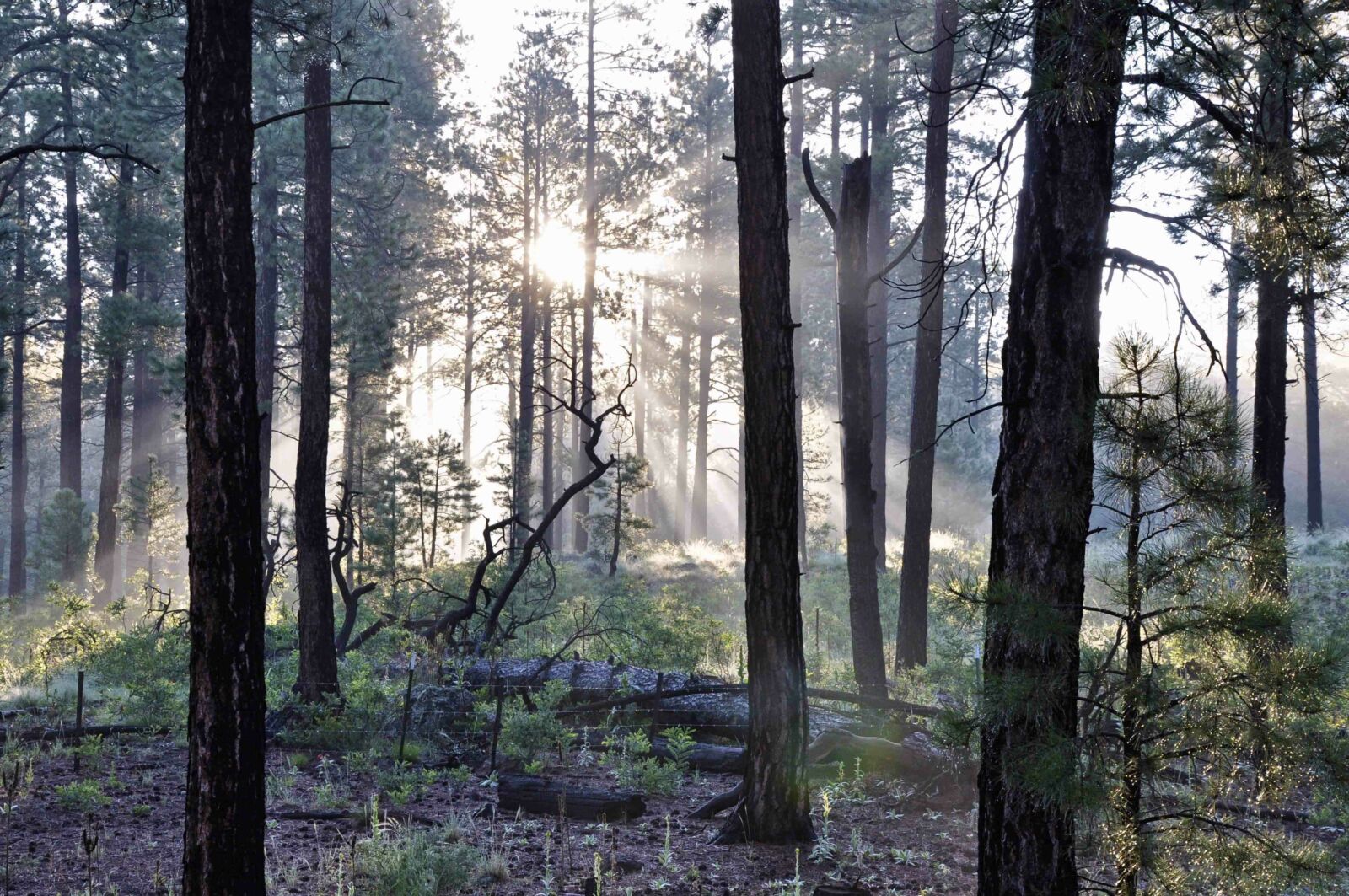Generating forest carbon offsets could be an important tool for helping fund restoration of southwestern National Forests.
The National Forest Foundation (NFF) announced today that it submitted an innovative carbon offset methodology to the American Carbon Registry for approval. Once approved, the proposed methodology will allow for the generation of verified carbon offsets from forest restoration projects on National Forest lands in the southwestern U.S. This methodology is the first of its kind and will help advance forest restoration activities aimed at reducing the risk of high severity fires in the region. Using the methodology, investors will be able to financially support forest restoration activities, such as those planned under northern Arizona’s Four Forest Restoration Initiative (4FRI), in exchange for verified carbon offsets.
The NFF developed the methodology with support from the Salt River Project (SRP) and the U.S. Forest Service. The methodology uses the best available science to calculate the differences in long-term carbon storage between forests that have been restored and those that have not and remain at risk of large-scale, high intensity wildfire.
The methodology was co-authored by Katharyn Woods, Ph.D. candidate at Northern Arizona University and Spencer Plumb, Ph.D. candidate at University of Idaho.
The basic concept is that through forest restoration we can reduce the risk of high-severity fires, preventing the release of large amounts of carbon dioxide from forests to the atmosphere. The methodology provides a way to accurately estimate the avoided emissions of carbon dioxide from fires and the amount of additional carbon dioxide that restored forests will continue to soak up.

Using the protocols established in the methodology, a project developer can generate verified carbon offsets from restoration projects on public lands in Arizona or elsewhere in the Southwest. The carbon offsets can then be sold to help pay down the cost of restoration treatments. Using the methodology, corporations will be able to work with the National Forest Foundation to invest in forest health projects on public lands, and in exchange receive locally generated carbon offsets. These offsets provide corporations and other entities with a tangible means for achieving environmental sustainability targets, such as carbon neutrality.
“This new financial mechanism could make a valuable contribution to accelerating forest restoration in Arizona and across the Southwest”, said Marcus Selig, Southern Rockies Region Director for the National Forest Foundation. “Millions of acres of our National Forests are in need of restoration, but the high financial costs of restoration activities jeopardize the U.S. Forest Service’s ability to implement necessary treatments.”
“The water that fills the reservoirs in SRP's water system starts as snow and rain in the forests of northern Arizona,” said Bruce Hallin, SRP’s Director of Water Supply. “Reducing the risk of wildfire in the forested lands in the Salt and Verde River watersheds protects these vital water supplies for residents and businesses in central Arizona. The proposed carbon offset methodology provides an innovative approach that can incentivize forest restoration in and around the watersheds that feed our surface water supplies. We are very pleased to partner with NFF and the U.S. Forest Service on this program which can provide carbon benefits, create resilience in water supplies, and improve forest conditions. This demonstrates our shared commitment to the long-term vitality of National Forest lands, and water supplies for the greater Phoenix metropolitan area.”

The methodology will be available for public comment through the American Carbon Registry beginning on July 12th and ending August 17th. There will be an on-line presentation about the methodology on July 26th at 12:00 pm Pacific Time. Interested parties can read the methodology and register for the webinar here. The webinar will be recorded and made available throughout comment period by the NFF. Please contact Spencer Plumb at [email protected] to access the webinar after July 26th.
Following the public comment period, the methodology must move through a peer review process, and if successful, could be approved for use as early as spring 2017. Once approved, the methodology may be used to support the planning, development, and implementation of forest restoration projects on public lands. Funds generated from carbon offsets will provide a valuable, additional revenue stream to bolster federal and industry-supported forest restoration projects, such as the 4FRI.
About the National Forest Foundation
The National Forest Foundation promotes the enhancement and public enjoyment of the 193-million-acre National Forest System. By directly engaging Americans and leveraging private and public funding, the NFF improves forest health and Americans’ outdoor experiences. The NFF’s programs inform millions of Americans about the importance of these treasured landscapes. Each year, the NFF restores fish and wildlife habitat, plants trees in areas affected by fires, insects and disease, improves recreational opportunities, and enables communities to steward their National Forests and Grasslands. Learn more at www.nationalforests.org.
About Salt River Project
Tempe-based SRP is the largest provider of water and electricity to the greater Phoenix metropolitan area, delivering about 800,000 acre-feet of water annually to cities that serve approximately 2.0 million residents, urban and agricultural water users, and serving more than 1 million electric connections as the third-largest public power utility in the nation. For more information, visit the SRP websites at www.srpnet.com or www.srpwater.com.

